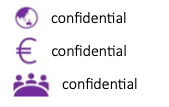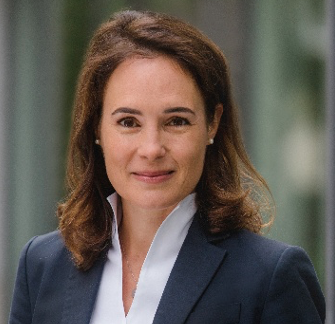Case Study
Future-Proofing HR: Integrating HR-Trends into Corporate Strategy
Alpine One GmbH, partner of Boyden Germany for organizational transformation, supported a global TIC leader in aligning its HR strategy with the company’s overall strategic process. Beginning with a workshop on emerging HR trends, Alpine One structured key insights and priorities, ensuring that HR’s strategic direction was well-prepared for integration into high-level decision-making, C-suite discussions, and the overall strategy process.
The Client
Our client is a global leader in the TIC industry (Testing, Inspection, and Certification services), dedicated to ensuring safety, quality, and sustainability across a wide range of sectors. With decades of expertise, the company continues to set industry standards, delivering trusted solutions that drive progress and safety worldwide.

The Challenge
Alpine One was engaged by Boyden Search Partner Dr. Robert Winterhalter to support his client’s HR function in aligning its HR strategy with the company-wide business strategy process, led by the strategy department. This engagement came at a pivotal time, as the HR function was undergoing its own internal transformation. Given HR's critical company-wide role, particular focus was placed on aligning the HR strategy with C-level and business priorities.
The process centered on critically assessing the existing HR strategy while leveraging key HR trends and benchmarks to shape, in a later step, actionable strategic objectives. Recognizing Alpine One’s expertise in this area, the client sought our guidance to navigate these crucial steps effectively. A standout feature of this initiative was the deep involvement of the overall HR leadership team and business leaders, up to the C-level, fostering collaboration, ownership, and alignment across the organization. All of this had to be delivered within a tight timeline, adding complexity to the process.
The Solution
The process began with a kickoff meeting to thoroughly understand the client’s current strategy and ongoing transformation efforts. This initial phase established a clear foundation by identifying the organization’s needs and objectives.
To prepare the HR leadership team for strategic reflection, an HR Future Trends workshop was conducted. Substantial pre-reading materials were provided to facilitate open discussions about the future HR strategy. During the workshop, the team engaged in a plenary session to collaboratively define HR’s future role and align on key strategic objectives.
Building on these discussions, a strategic reflection phase identified critical gaps and newly emerging challenges within the existing HR strategy, ensuring alignment with the broader business strategy. These insights formed the basis for a strategic dialogue, prioritizing areas of impact and setting a clear direction for future initiatives.
Comprehensive research and analysis of industry trends and competitive benchmarks provided a robust evidence base for shaping the HR strategy. This culminated in a detailed gap analysis and the formulation of actionable strategic objectives designed to drive long-term value.
The process was continuously supported by "challenger workshops" to ensure alignment with business and company-wide goals.
Finally, the implementation of these strategic objectives was enabled by refining strategic priorities and complementing them with concrete action plans.
Each step was carried out in close coordination with the client, fostering alignment and ensuring shared ownership of the results.
Depth of content, structured preparation, and clearorganization – all while meeting every deadline and remaining constantly accessible. A truly outstanding collaboration that we would gladly continue.
CHRO
The Results
The strategic process resulted in a comprehensive HR Strategy, tailored to the client's ongoing HR transformation needs and aligned with current HR trends. The outcome included a detailed gap analysis, highlighting areas for improvement and identifying key strategic objectives. The collaborative input from the management team ensured the strategy reflected both the organizational goals and the practical considerations of the client’s resources and change maturity.
Additionally, the process showcased HR’s capacity to generate value beyond its alignment with the business strategy. The HR Strategy emphasized strengthening organizational culture, improving teamwork, and fostering cross-functional collaboration to drive innovation and cohesiveness across departments. These elements, while often categorized as soft factors, contribute significantly to the organization’s long-term success and enhance HR’s strategic standing within the company.
The clear, actionable objectives provided a roadmap to drive HR’s role in shaping the future workforce, supporting the business in meeting their long-term goals while ensuring alignment with overall business transformation.





